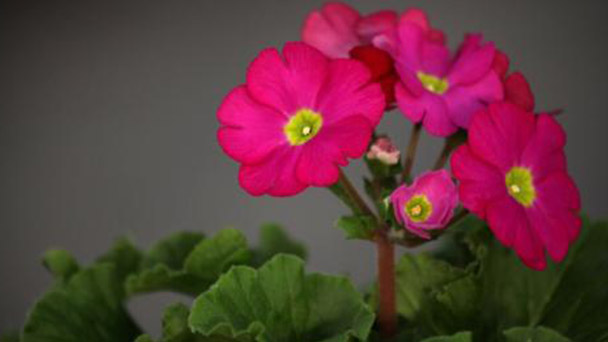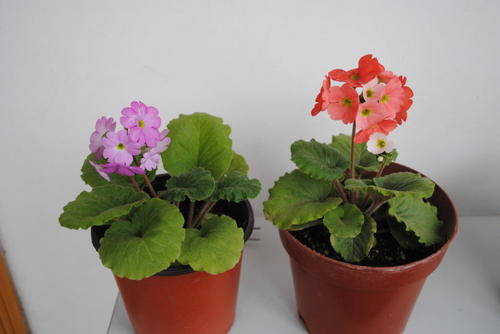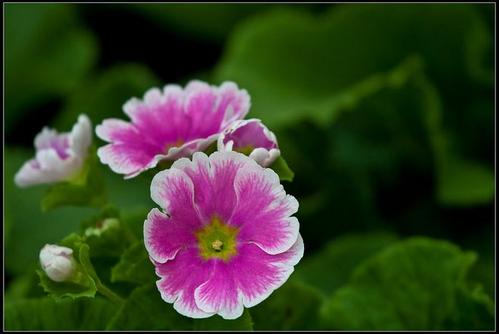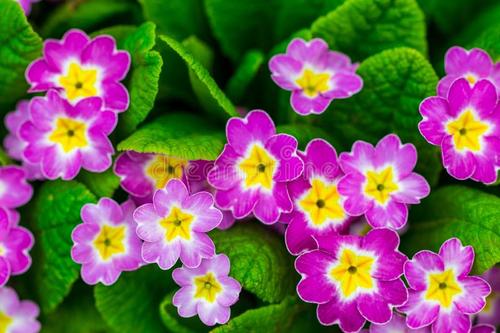German primrose profile
Written by Maggie
Jan 23 2021

German primrose, scientific name Primula obconica, also called Poison primrose, is a beautiful herb in the genus Primrose. German primrose, like many other primroses, is an important indoor flower.
German primrose picture

Shape characteristics of German primrose
German primrose (Poison primrose) is a woody perennial, with short stems to 30 cm tall, dark brown. german primrose (Poison primrose) has many fibrous roots. Leaves are basal, long annular to ovoid, have long stalk, the edge has shallow notch; Leaf is smooth and clean, leaf back dense birth milky white pubescent, often with toxic harmful points will matter. Scape is drawn from the leaves, umbels are large, calyx funnel-shaped, corolla bright red, plant variety is complete and colorful, white, magenta, magenta, blue, light red or light purple and other colors.Seed cat plague, dark brown after maturity.
Growth habits of German primrose
German primrose (Poison primrose) likes cold and damp, avoids heat exposure, resistant to fertilizer and low temperature. The optimum temperature for German primrose growth and development is 13-18 ℃, and the sandy loam with high humus moisture content is the best soil. Growth and development can take 110-140 days depending on temperature.
The flowering temperature of German primrose (Poison primrose) is 10-15℃. It is not as cold as other primroses, but moderately cold can make the main stem grow and compact, and together can increase the total number of flower branches. After entering the flowering stage, the concentration of phosphorus and potassium fertilizer should be increased moderately. Usually, 200ppm fertilizer of 15-10-30 should be applied. After the flowering period, special attention should be paid to the pruning and repair of the fallen flower branches to avoid the generation of gray mold.

German primrose growing methods
Sow in July and August. German primrose (Poison primrose) seeds are small, planted in shallow pots, generally not covered with soil, covered with glass on the pot to keep wet, keep 15-20 ℃ temperature, moist soil, one or two weeks can germinate, seedlings after gradually transplanted to a place with sufficient light. When the seedlings have two true leaves, move them to a shallow pot. Plantation of five or six true leaves in separate pots. Potted soil for German primrose can be used rot leaf soil 3, peat soil 1, barnyard manure soil 1, sand a match into. During the growing period of German primrose, it is necessary to shade slightly, maintain high air humidity and ventilation, and apply decayed organic fertilizer solution or chemical fertilizer solution once a week After autumn, the room needs plenty of sunshine. Generally three to five months after sowing can flower. Flowering temperature of German primrose should not be too high, otherwise shorten the flowering period. In winter and spring, the room temperature should be kept at about 12℃. Generally in early October and out at the end of April. Post spring flowers do not like water, two or three days a watering. German primrose don't like fat either. Avoid by all means splashing the fat water on the leaf, so as not to cause decay.
The value of German Primrose
German primrose (Poison primrose) is key indoor potted flowers and are widely grown in countries around the world. One year German primrose is the key flower for decorating your house in spring and winter. Generally in bloom from winter to spring of the following year. The whole plant can be used as a medicine, clear heat and remove fire.
Many people are susceptible to skin allergies. Before touching, wipe hands with ethanol. After touching, clean hands with soap solution for maintenance. It has been reported that some German primrose species containing primrose alkaloid have been developed overseas.

Latest Updated
- Benefits of Bugleweed - 7 Science-backed Health Benefits
- Bugleweed Dangers & Side Effects - Is It Poisonous?
- How to Plant Evergreen Trees - What You Should Know
- When to Plant Evergreens - Grow Guide for Evergreen Trees
- 12 Wonderful Evergreen Shrubs for Your Garden
- 12 Popular Evergreen Plants with Pictures for Beginners
- When And How To Prune A Lilac Bush Like a Pro
- How to Grow & Care for Lilac Vine (Hardenbergia Violacea)
- Japanese Lilac Tree (Syringa Reticulata) Care & Propagation Guide
- Shumard Oak Pros and Cons - What to Know
Popular Articles
- Winter maintenance of Antirrhinum Majus
- How to Grow Terminalia Mantaly Tree
- How to Grow and Care for Crossostephium Chinense
- How to grow Antirrhinum Majus in spring
- Peristeria Elata (Dove Orchid) Profile: Info & Care Guide
- Underwatered Snake Plant (Sansevieria Trifasciata) - Signs And How To Fix
- How to Care for Brazilian Jasmine Plant (Mandevilla Sanderi)
- How to Grow & Care for Graptopetalum Purple Delight in Summer
- Rosa Chinensis (China Rose): Plant Growing & Care Tips
- How to Care for Baby Sun Rose (Aptenia Cordifolia)